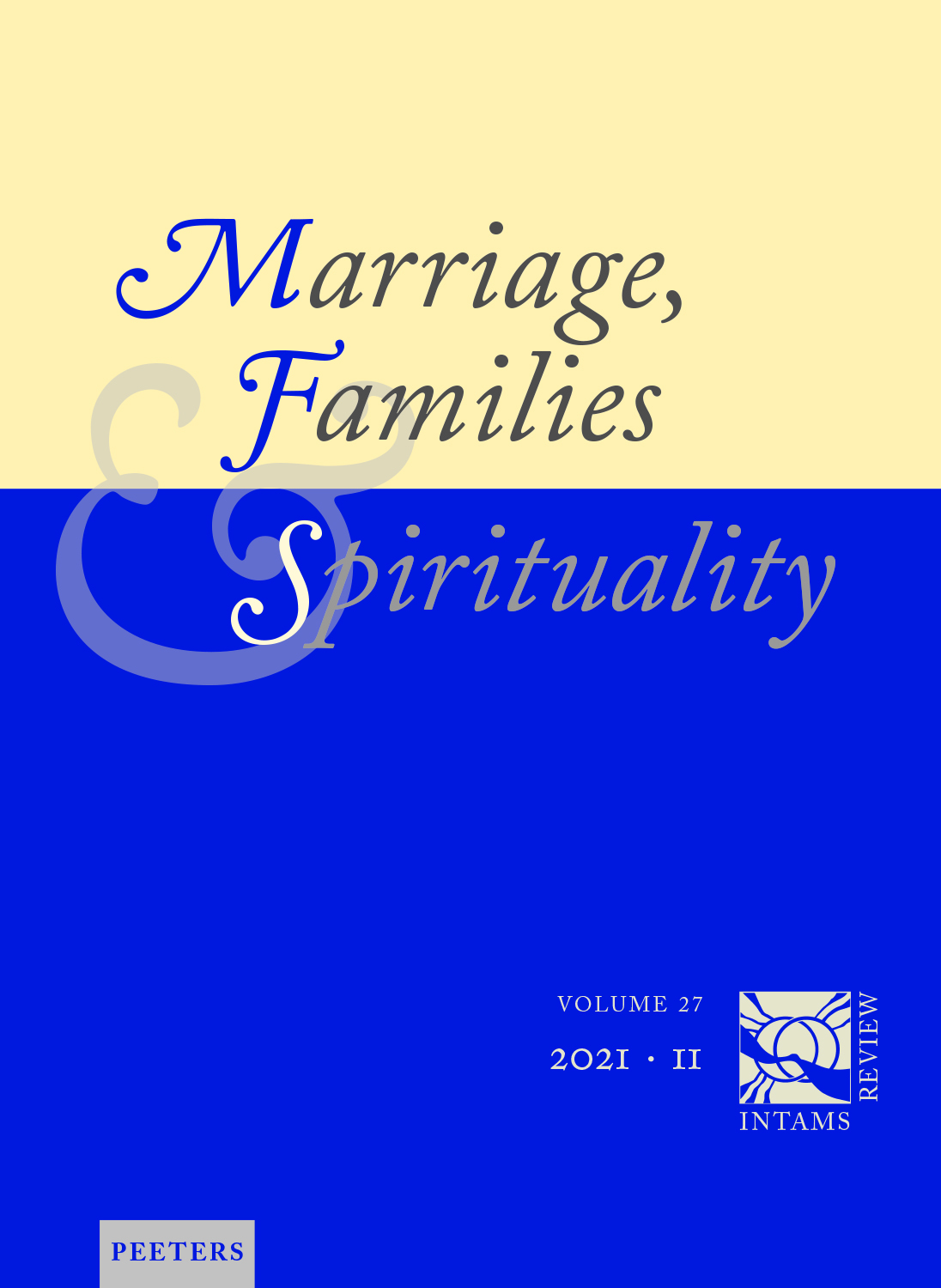 previous article in this issue previous article in this issue | next article in this issue  |

Preview first page |
Document Details : Title: La sessualità come risorsa della vita coniugale Author(s): PALUMBIERI, Sabino Journal: Marriage, Families & Spirituality Volume: 5 Issue: 1 Date: 1999 Pages: 13-26 DOI: 10.2143/INT.5.1.2014742 Abstract : Sexuality as a resource for married life The first resource humankind has is humankind-as-resource. The first resource the couple has is the different sexuality of the partners. But what is sexuality? Is it possible to find a way through the labyrinth of contemporary interpretations? If it is an anthropological dimension, what is specific in the human being to the male version, and what is specific to the female? This study focusses on the concept of sexuality mainly on the level of individuality, involving the three dimensions of the human constitution: physical-organic, psychic-affective and spiritual. It sets out a typology of sexuality as physical (sex), psychic, and spiritual. Then there is the level of sexuality of the relational type. What is to be understood here is complementary intersexuality as man-woman reciprocity, as face-to-face encounter – which presents rather as ontological front-to-front with each acting as a mirror for the other. It is reciprocity – a fascinating perception of complementary and convergent differences at all levels. This is the prodigy of two fulfilled unitotalities who become one complete uniduality. The asymmetrical nature of this reciprocity is then analysed, in as much as along the way of the life of love each of the two partners sends vital messages to each other that are constantly enriched by the ever-increasing contribution from the other. And this continues indefinitely. Reciprocity is moreover fecundity – not merely as creative possibility on the biological level, bringing the consequence of a being-other, the child, but also as creative strengthening of the being-of the other; the quality of life of the partner, as joy, force, sense of life. Reciprocity is integrity of being. It is convergence of the multiple ad unum. It is harmony. It is therefore epiphany of beauty. In the course of maturation, the beauties of the two unitotalities are transcended in that of the uniduality of the couple. As Dostoevsky reminds us, only beauty can save the world, can give a new face to a world that is marred because soiled by boredom and nausea and with its unity shattered. |
|


